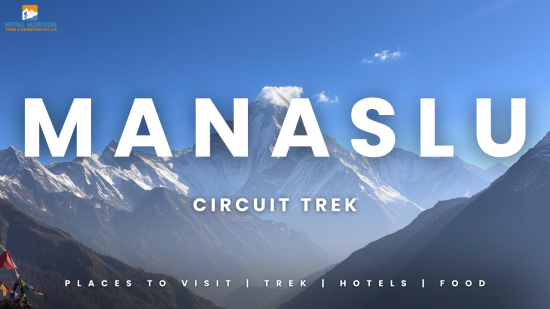How Difficult Is Annapurna Base Camp Trek? Fitness Level, Training & Complete Difficulty Guide 2025
21st August 2025
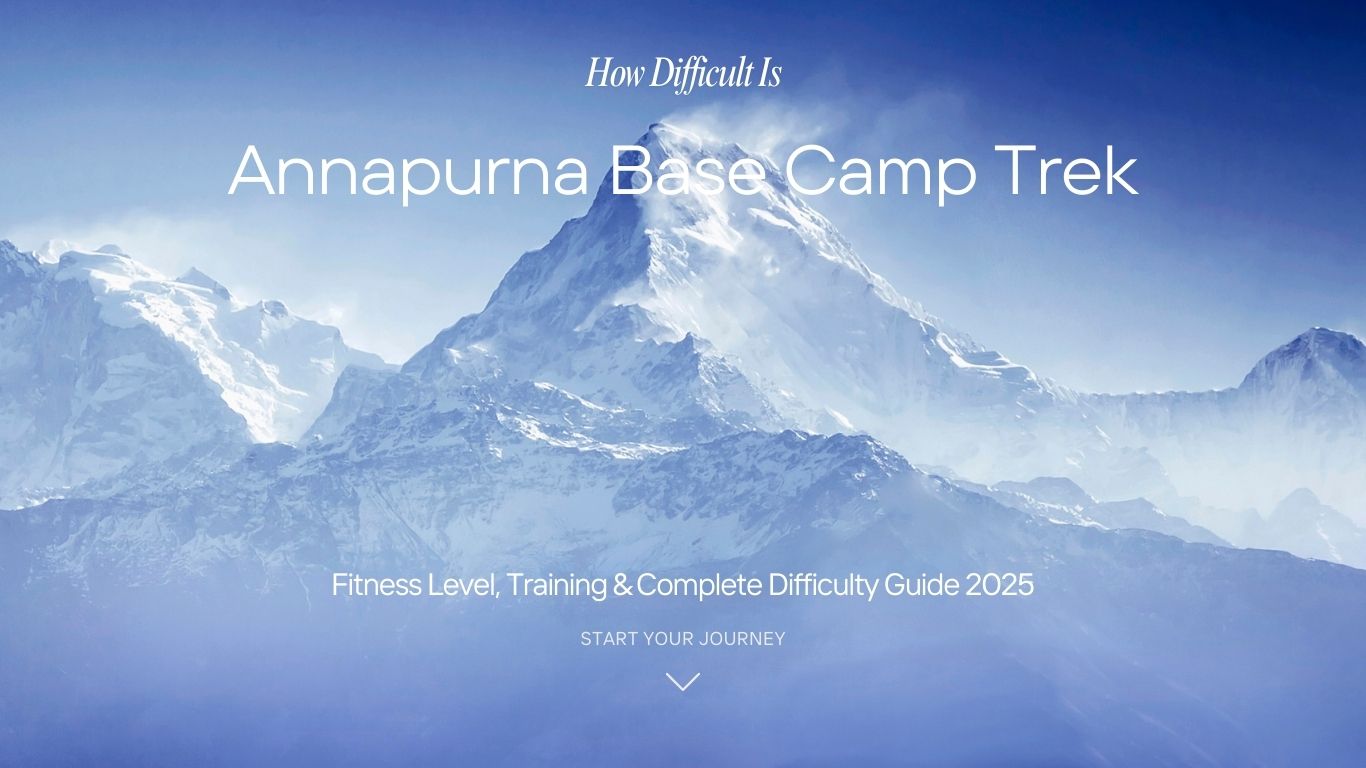
The Annapurna Base Camp trek (ABC trek) is widely regarded as one of the most iconic trekking adventures in Nepal, offering a rare blend of natural beauty, cultural immersion, and personal achievement. Rising to an impressive elevation of 4,130 meters (13,550 feet), this journey leads travelers deep into the heart of the Annapurna Sanctuary, where the snow-capped peaks surround you in a breathtaking amphitheater of mountains. Along the way, adventurers are rewarded not only with panoramic Himalayan views but also with encounters in traditional Gurung and Magar villages, vibrant rhododendron forests, cascading waterfalls, and serene riversides. This mix of natural and cultural highlights makes it a bucket-list adventure for nature lovers, photographers, and outdoor enthusiasts alike.
But how difficult is the Annapurna Base Camp trekking experience in reality? While the route is considered moderate in terms of grading, its difficulty depends on factors such as physical fitness, stamina, altitude adjustment, and mental preparation. For first-time travelers to the Himalayas, the challenge lies in consecutive days of walking 5–7 hours on diverse terrain, including stone staircases, forest paths, and steep ascents. For seasoned adventurers, the trekking offers an opportunity to push limits while still being achievable without technical climbing skills. This guide explores every detail — from physical demands and training methods to altitude risks and preparation strategies — so you’ll know exactly what to expect.
At Nepal Horizon Treks, we pride ourselves on curating the best trekking experiences in Nepal, tailoring each journey to fit individual needs and preferences. Whether you dream of reaching Annapurna Base Camp, exploring the rugged beauty of Everest Base Camp, or wandering into the tranquil Langtang Valley, our expert guides ensure that your adventure is not only safe and comfortable but also deeply meaningful. With customizable itineraries, professional support, and a focus on creating memorable moments, we turn your Himalayan dream into a reality that goes far beyond the journey itself.
Trek Classification and Grading
The ABC trekking falls under Grade 2 (Moderate) in Nepal's trekking classification system. This grading indicates:
- Altitude Range: Up to 5,000 meters (ABC reaches 4,130m)
- Daily Walking Time: 5-7 hours per day
- Trail Difficulty: Varied terrain with gradual to steep sections
- Experience Required: Some trekking experience preferred but not mandatory
- Fitness Level: Good physical fitness and stamina required
Physical Demands and Challenges
Daily Walking Requirements
- Distance: 6-15 kilometers per day
- Duration: 5-7 hours of walking daily
- Elevation Gain: Starting from 1,070m (Nayapul) to 4,130m (ABC)
- Terrain: Forest trails, steep terrain, suspension bridges, and stone steps
Key Physical Challenges
The trekking presents several demanding aspects that contribute to its moderate difficulty rating:
Steep Stone Staircases: The section between Ulleri and Ghorepani features particularly challenging stone steps that can be exhausting. Trekkers' stamina is put to the limit as they ascend the steep stone stairs from Chhomrong to Sinuwa.
Sustained Daily Effort: Unlike day hikes, the ABC trekking requires consecutive days of 5-7 hour walks, testing both physical stamina and mental endurance.
Altitude Factors: While not as high as Everest Base Camp, the elevation gain from sea level to over 4,000 meters still poses challenges for acclimatization and can cause fatigue.
Is Annapurna Base Camp Trek Suitable for Beginners?
Yes, the ABC trek is beginner-friendly with proper preparation. Here's what makes it accessible to first-time trekkers:
Beginner-Friendly Aspects
- Well-established trails with clear signage and frequent villages
- Tea house accommodation available throughout the route, eliminating camping needs
- Moderate altitude compared to other Himalayan trekking
- Flexible itineraries ranging from 7-12 days
- Cultural immersion opportunities in traditional Gurung and Magar villages
Requirements for Beginners
- Basic fitness level: Ability to walk 5-6 hours daily
- Mental preparation: Readiness for multiple consecutive days of trekking
- Gradual acclimatization: Following proper ascent protocols
- 2-3 weeks of pre-trek training with regular walking or hiking
Can You Do Annapurna Base Camp Trek in Just 5 Days?
Yes, a 5-day ABC trekking is possible but comes with significant challenges. This shortened itinerary is designed for experienced trekkers with limited time.
5-Day Itinerary Overview
- Day 1: Drive to Jhinu Danda, trekking to Sinuwa (2,340m)
- Day 2: Trekking to Deurali (3,230m)
- Day 3: Trekking to Annapurna Base Camp (4,130m)
- Day 4: Descend to Bamboo (2,310m)
- Day 5: Trekking to Jhinu Danda, drive back to Pokhara
Challenges of the 5-Day Trek
- Rapid altitude gain: Approximately 1,000 meters elevation gain per day
- Long walking days: 7-8 hours of trekking required
- Increased altitude sickness risk: Limited time for acclimatization
- Physical demands: Requires excellent fitness and prior trekking experience
- Not suitable for beginners: The fast pace and rapid elevation gain make this inappropriate for first-time trekkers
Annapurna Base Camp vs Everest Base Camp: Which Trek Is Harder?
Most people agree that Everest Base Camp is more difficult than Annapurna Base Camp.
Comparative Analysis
|
Factor |
Annapurna Base Camp |
Everest Base Camp |
|
Maximum Altitude |
4,130m (13,550 ft) |
5,364m (17,598 ft) |
|
Duration |
7-10 days |
12-14 days |
|
Distance |
~70-115 km |
~130 km |
|
Altitude Sickness Risk |
Lower risk |
Higher risk due to elevation |
|
Terrain Difficulty |
Varied, more forgiving |
More rugged and demanding |
|
Weather Conditions |
More flexible seasons |
Harsher, colder conditions |
|
Accessibility |
Road access to Pokhara |
Flight required to Lukla |
Key Differences
- Altitude Impact: EBC's higher elevation significantly increases difficulty and altitude sickness risk
- Duration Stress: EBC's longer duration creates more physical and mental fatigue
- Terrain Challenges: EBC features more rugged paths and suspension bridges
- Weather Vulnerability: EBC faces more unpredictable and severe weather conditions
What Trekking Grade Is Annapurna Base Camp Trek Classified As?
The ABC trekking is classified as Grade 2 (Moderate) in Nepal's official trekking grading system.
Grade 2 Characteristics
- Elevation Range: Up to 5,000 meters (ABC reaches 4,130m)
- Trail Description: Varied terrain with gradual to steep sections, well-marked trails
- Duration: 4-6 hours of trekking per day
- Fitness Requirement: Good fitness and stamina required
- Acclimatization: 1-2 days recommended
- Technical Skills: No technical climbing skills required
Nepal's Trekking Grade System
- Grade 1 (Easy): Up to 3,000m, 3-5 hours daily walking
- Grade 2 (Moderate): Up to 5,000m, 4-6 hours daily walking - ABC falls here
- Grade 3 (Difficult/Strenuous): Above 5,000m, 6-8 hours daily walking
- Grade 4 (Technical): Above 6,000m, requires mountaineering skills
How Fit Do You Need to Be for Annapurna Base Camp Trek?
Minimum Fitness Requirements
Cardiovascular Endurance: You should be able to walk continuously for 5-7 hours while carrying a daypack. A good benchmark is being able to run 20-30 minutes at a comfortable pace or cycle 30-50km regularly.
Leg Strength: Strong lower body muscles are essential for navigating steep ascents and descents on stone steps. You should be comfortable with sustained uphill walking.
Overall Stamina: The ability to maintain effort over multiple consecutive days is crucial, as the trekking involves 7-10 days of continuous walking.
Fitness Benchmarks
- Walking Endurance: Comfortable walking 15km in a day on multi-day basis
- Stair Climbing: Ability to climb stairs continuously for 30-60 minutes
- Backpack Carrying: Comfort carrying 5kg+ daypack for extended periods
- Recovery Ability: Capacity to repeat similar effort levels on consecutive days
Can Children and Older Trekkers Do Annapurna Base Camp Trek?
Children on ABC Trek
Minimum Age Recommendations:
- General guideline: Children should be at least 12 years old
- Conservative approach: Some operators recommend minimum 7-8 years for self-guided walking
- Family trekking options: Children under 7 years not advised due to altitude concerns
Considerations for Children:
- Physical capability: Assess child's endurance and walking ability
- Altitude sensitivity: Children may have difficulty communicating altitude sickness symptoms
- Medical consultation: Healthcare professional approval recommended
- Experience requirement: Some prior hiking experience beneficial
Elderly Trekkers on ABC Trek
No Official Age Limit: There are no strict age restrictions, with trekkers in their 60s and 70s successfully completing the trekking.
Age-Related Considerations:
- Health assessment: Thorough medical checkup recommended for those over 60
- Slower pace: Extended itineraries often beneficial for elderly trekkers
- Support systems: Professional guides and porter support highly recommended
- Acclimatization: Extra time needed for altitude adjustment
Senior-Specific Preparations:
- Cardiovascular health: Existing heart conditions require medical clearance
- Joint health: Arthritis or mobility issues need careful consideration
- Medication management: Ensure adequate supply of regular medications
- Insurance coverage: Comprehensive coverage including helicopter evacuation
Annapurna Base Camp Trek Altitude Sickness: Difficulty & Risks Explained
Altitude Sickness Risk Assessment
Risk Level: Low to moderate compared to other high-altitude trekking. The ABC's maximum elevation of 4,130m places it in the moderate altitude sickness risk category.
Critical Altitude Zones:
- Above 2,500m: Initial symptoms may begin to appear
- Ghandruk to ABC (1,940m to 4,130m): Rapid altitude gain zone requiring caution
- Deurali to MBC (3,230m to 3,700m): Highest risk period for symptom development
Common Symptoms
- Mild symptoms: Headache, dizziness, fatigue, shortness of breath
- Moderate symptoms: Nausea, loss of appetite, sleep disturbances
- Severe symptoms: Intense headache, vomiting, confusion, difficulty walking
Prevention Strategies
- Gradual ascent: Don't ascend more than 500-600 meters per day above 2,500m
- Acclimatization days: Spend extra nights at Chhomrong (2,170m) or Himalaya Hotel (2,920m)
- Hydration: Drink 3-4 liters of water daily
- Avoid alcohol: Alcohol consumption increases altitude sickness risk
- Medication: Acetazolamide (Diamox) can help with acclimatization when prescribed
Emergency Protocols
- Immediate descent: If symptoms worsen, descend 500-1,000 meters immediately
- Medical evacuation: Helicopter rescue available from MBC or ABC (weather dependent)
- Guide communication: Always inform guides of any symptoms
How to Train and Prepare Physically for Annapurna Base Camp Trek?
Pre-Trek Training Timeline
Start training 2-3 months before departure to build adequate fitness and endurance.
Cardiovascular Training
Primary Focus: Build stamina for 5-7 hours of continuous walking.
Recommended Activities:
- Running: 20-30 minutes at comfortable pace, 3-4 times weekly
- Cycling: 30-50km sessions, 3 times weekly
- Swimming: 30-40 minutes, excellent for overall conditioning
- Stair climbing: Simulate trekking conditions with loaded backpack
Target Goal: Ability to run 10km in under 60 minutes comfortably.
Strength Training
Lower Body Focus: Essential for steep ascents and descents.
Key Exercises:
- Squats: Build quadriceps and glute strength
- Lunges: Develop single-leg stability and power
- Calf raises: Strengthen calves for uphill walking
- Step-ups: Simulate stone stair climbing
Core Strengthening:
- Planks: Improve stability with backpack weight
- Bicycle crunches: Enhance rotational stability
- Leg raises: Build lower abdominal strength
Hiking-Specific Training
Progressive Training:
- Week 1-4: Short day hikes (2-4 hours) without weight
- Week 5-8: Longer hikes (4-6 hours) with gradually increasing pack weight
- Week 9-12: Multi-day hikes with full pack weight simulation
Terrain Training: Practice on similar terrain - hills, stairs, uneven surfaces.
Pack Weight Simulation: Train with 5-8kg daypack to simulate trekking conditions.
Flexibility and Mobility
Importance: Prevent injury and improve movement efficiency.
Recommended Activities:
- Yoga: Improve flexibility and balance
- Dynamic stretching: Pre-workout mobility routines
- Static stretching: Post-workout recovery sessions
Tips to Make Annapurna Base Camp Trek Easier for First-Time Trekkers
Pre-Trek Preparation
Physical Conditioning: Start training 2-3 months in advance with regular cardio and strength exercises. Focus on building stamina through hiking with a weighted backpack.
Gear Familiarization: Test all trekking gear before departure, especially boots and clothing systems. Ensure proper fit and comfort during practice hikes.
Route Research: Study the itinerary, understand daily distances and elevation gains to set realistic expectations.
During the Trek
Pacing Strategy:
- Start slowly: Begin each day at a comfortable, sustainable pace
- Take regular breaks: Rest every 45-60 minutes to prevent exhaustion
- Listen to your body: Don't push through pain or severe fatigue
Altitude Management:
- Follow "climb high, sleep low" principle when possible
- Stay hydrated: Keep yourself hydrated by drinking water frequently rather than only when you're thirsty.
- Recognize symptoms: Be aware of altitude sickness warning signs
Daily Routine Optimization:
- Start early: Begin trekking by 7-8 AM to avoid afternoon weather
- Layer clothing: Adjust layers frequently for temperature changes
- Fuel regularly: Eat consistently to maintain energy levels
Support Systems
At Nepal Horizon Treks, we provide professional guides, porter support, and personalized itineraries. Whether you’re a beginner or seasoned adventurer, our team ensures your journey to Annapurna Base Camp is safe, comfortable, and memorable.
Professional Guidance: Hire experienced guides familiar with the route and altitude protocols. Local guides provide valuable insights into weather, terrain, and cultural aspects.
Porter Services: Consider hiring porters to carry main luggage, allowing you to trek with just a daypack.
Group Trekking: Trekking with others for motivation, safety, and shared experience.
Equipment Essentials
Proper Footwear: Well-fitted, broken-in trekking boots are crucial for comfort and injury prevention.
Layering System: Multiple clothing layers allow adaptation to changing temperatures and conditions.
Trekking Poles: Reduce stress on knees during descents and provide stability on uneven terrain.
Mental Preparation
Realistic Expectations: Understand that discomfort is normal - the trek is challenging but achievable.
Positive Mindset: Focus on the journey and cultural experience, not just the destination.
Flexibility: Be prepared to adjust pace or itinerary based on conditions and personal needs.
The Annapurna Base Camp trek offers an exceptional introduction to high-altitude trekking in the Himalayas. While moderately challenging, proper preparation, realistic expectations, and professional support make it accessible to motivated beginners and rewarding for experienced trekkers. The combination of stunning mountain scenery, rich cultural encounters, and achievable physical demands makes ABC an ideal choice for those seeking an authentic Himalayan adventure without the extreme technical or physical demands of more challenging routes.
If you’re ready to experience the magic of Annapurna Base Camp, join us at Nepal Horizon Treks — where every journey is crafted for adventure, safety, and unforgettable memories in the heart of Nepal.
Recent From Blogs
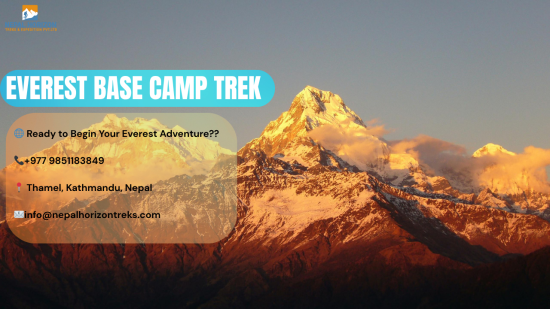
28th October 2025
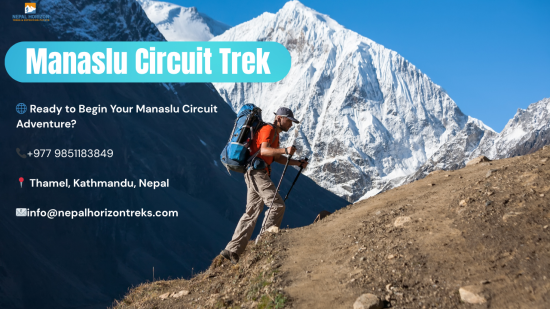
25th October 2025
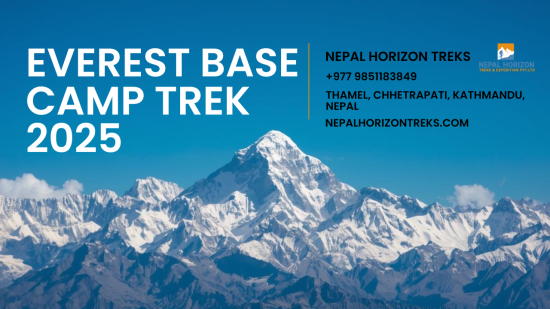
24th October 2025
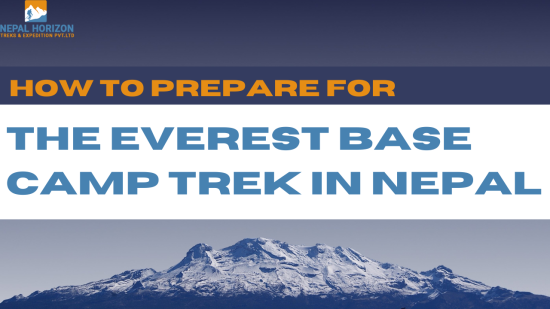
18th October 2025
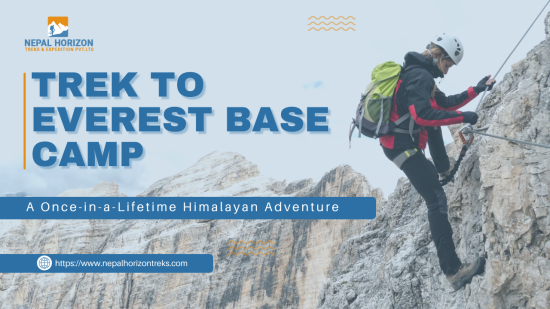
14th October 2025

12th October 2025

10th October 2025

7th October 2025


